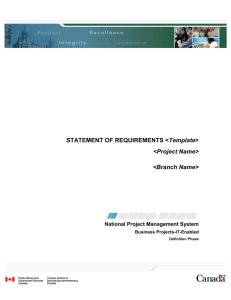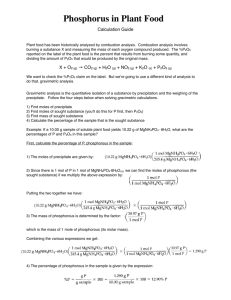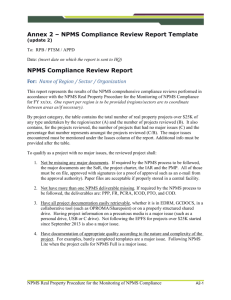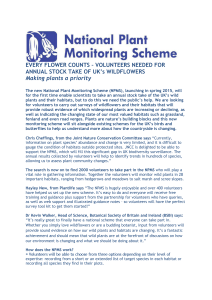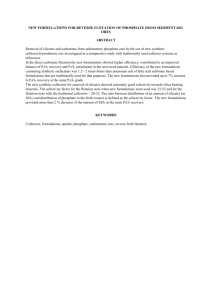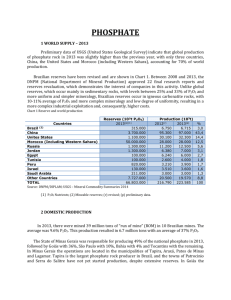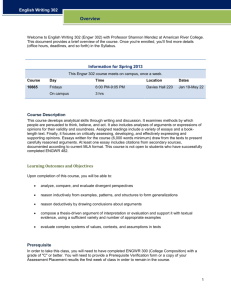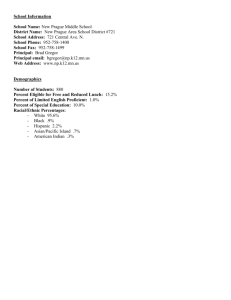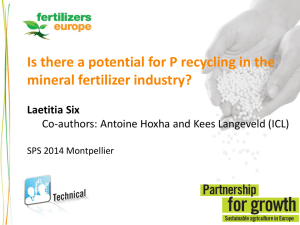Philosophy of Implementing Digestion System in Dihydrate PA
advertisement
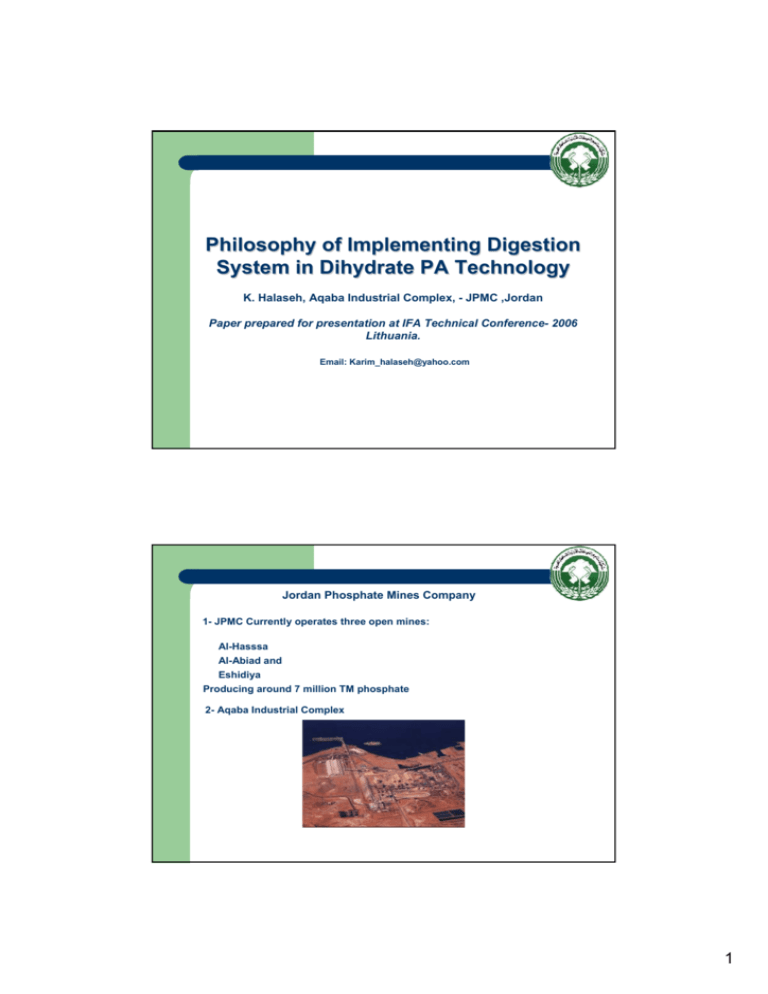
Philosophy of Implementing Digestion System in Dihydrate PA Technology K. Halaseh, Aqaba Industrial Complex, - JPMC ,Jordan Paper prepared for presentation at IFA Technical Conference- 2006 Lithuania. Email: Karim_halaseh@yahoo.com Jordan Phosphate Mines Company 1- JPMC Currently operates three open mines: Al-Hasssa Al-Abiad and Eshidiya Producing around 7 million TM phosphate 2- Aqaba Industrial Complex 1 - SA Monsanato Four Beds – double Conversion 4500 - PA Dihydrate Prayon Mark IV Process 1310 - DAP Gulf Process , Badger INC 2400 - ALF3 50 Ton/day Joint Ventures The Indo -Jordan Chemical Company (IJC) A production capacity of 225.000 MTPY of P2O5 The Jordan - Japan NPK Plant For the purpose of producing NPK and DAP fertilizers A production capacity of 200.000 MTPY of P2O5 JPMC’s Capital has reached 100 Million US$ in 2001 The strategies of JPMC are: At mines: -To increase phosphate production to 8 Mt in 2008 -To use natural gas 2 Phosphate Rock - high grades - Soon will be depleted on the international market From the international experience - 29% P2O5 content is admissible - should not be less than 28.5% P2O5 ( BPL 62.27% ) Lower grades 65 % BPL Lead to : Higher specific consumptions of Phosphate and SA as well, - Consequently, more heat will be generated - Higher content of impurities - Which impact directly on: P2O5 recovery Slurry filtration rate 3 To overcome the problems cause by phosphates qualities Technology PA producers - must develops and - Advance existing equipments - New process technologies must be more Flexible with Filter surface areas Reaction volumes Management A direct loss of production Can be reduced to minimum if : 70-72% BPL Annual Production 65-66% BPL -The plant is well managed - Increased on stream factor - Reduce unscheduled shutdowns - A steady operation helps in achieving consistently High productivity Efficiencies 4 Fig.-1 P2O5 Content & Specific Consumption of Phosphate treated at Aqaba Plant during 1982-2005 34.00 P2O5 % 3.800 3.700 33.00 P2O5 3.600 PR Specific Consumption Ts/T 32.00 P 2 O 5 content % 3.500 31.00 3.400 30.00 3.300 29.00 3.200 1- P2O5 % 2- UNIT CONS. 28.00 3.100 27.00 1982 1983 1984 1985 1986 1987 1988 1989 1990 1991 1992 1993 1994 1995 1996 1997 1998 1999 2000 2001 2002 2003 2004 3.000 2005 Years Specific consumptions have been increased to : Phosphate - 15 % SA - 7.5% per t P2O5 produced Fig.-3 PA Yearly Production and P2O5 Yield of Aqaba PA plant 1- Production, 2- Yield. 1 P2O5 % 96.00 Yield 400000 Production 350000 95.00 2 250000 93.00 200000 PA Production, MT Overall Plant Efficiency, % 300000 94.00 92.00 150000 91.00 100000 90.00 1982 50000 1983 1984 1985 1986 1987 1988 1989 1990 1991 1992 1993 1994 1995 1996 1997 1998 1999 2000 2001 2002 2003 2004 2005 2005 2006 Years P2O5 production and overall efficiencies of Aqaba PA plant between 1982 and 2005 can be divided in to three periods: 5 First Period 1982-1993 Gas to scrubbers Ucego filter S.A 80% Phos. Rock Phosphate Attack section REACTION SYSTEM Second Period 1994-2001 Gas to scrubbers Ucego filter Phos. Rock PA S.A 98.5% LLFC S.A 98.5% Mixer Concrete Rectangular Tank Digester Phos. Rock Phosphate Attack section REACTION SYSTEM 6 Third Period 2001-2004 Ucego filter Gas to scrubbers Phos. Rock S.A 98.5% PA LLFC LLFC S.A 98.5% Mixer Phos. Rock Phosphate Attack section REACTION SYSTEM Table-1 Production, Yield Criteria of Specific Reaction and Digestion Volumes of PA Dihydrate Processes Unit First Period 1993-1982 Second Period 2001-1994 Third Period 2004-2001 G. Phos. Passing Tyler # 100 % 100 85 – 75 85 – 75 SRV m3/mtpd P2O5 1 1.34 1.34 SDV m3/mtpd P2O5 No 0.64 0.68 SFC ]Filer area 205 & 208 m2.[ mtpd P2O5/m2 )Using 73-75% BPL( 4.6 )Using-68-70% BPL( 6.3 )Using 67-65 & 65 % BPL( 5.5 Holding Time min 170-160 330 230 v. high No high Scales build up Filter cloth spin time day 12 25 < 17 Filter acid % 26 > 28 < 26.5 Limitation Production Yes No Yes PA slurry condition High super saturation De super saturation Super saturation Slurry temperature before filtration High constant temperature low temperature High constant temperature Bottlenecks Digesters + reaction section No Digesters Production Ton *10³ 303 375 < 345 Efficiencies Washing Reaction Yield % % % 98.0 95.61 93.70 98.93 96.35 95.31 98.17 96.19 94.43 7 Fig-4 Effect of Reaction & Digestion Systems on the Plant Efficiencies, 1-Gypsum Washing, 2-Reaction 3- Yield % , The average efficiencies: - washing efficiency 98.93 % - Reaction efficiency 96.34% - The yield 95.31% (97.81- 99.45%) (95.55- 96.38%) Fig-5 Performance of PA Plant without Digestion System on Attack- Filtration and overall Plant Efficiencies % (Without digester): average efficiencies : - Washing 98.17 % 96.66 to 98.88% - Reaction 96.19 % 95.43 - 96.63,% - Yield 94.43% 8 Typical scales composition of filter grids Mainly: CaSO4 x H2O Fig.-7 Tendency of scale formation on the filter Perforated sheets of Aqaba PA plant (Before Linking up the digester) Fluorides Compounds such as Na K NaK Fluosilicates Chukhrovite Fig.-17 Tendency of scale formation on the Filter perforated sheets of Aqaba PA plant, (After linking up the digester) After 6 months of operation , - No more build up of scales are observed - The old scale is dissolved by Cooling tower acidic water 9 1- Major bottlenecks of I and III periods are: - Shortage of reactor retention time - Absence of digester Slurry is handled and filtered in a state of high constant temperature, Caused serious process problems; - High super saturation of the slurry PA - Low slurry filtration rate - Low P2O5 recovery - Low service life of filter cloth cycle - High scales build up - High frequency of wash cycle time - Low of stream factor 2- The concepts of using digestion system are : -To provide volume separate before filtration stage, -To allow fully de super saturation of slurry PA liquid phase 10 History of implementing Digestion system It was linked with Prayon –Mark III in 1965 -Increasing the reaction volume by 25 % -Adding a single rectangular concrete tank digester with two agitators Three carbon steel cylindrical tanks digester is linked with Prayon |mark IV IN 1982 Fig-8 Arrangement of Digestion system With Prayon Mark-IV Dihydrate Process Problems of Digestion System of Aqaba PA plant Three carbon steel rubber lined tanks digester , - protected with only 1.5 m carbon bricks in height . -Began to emerge catastrophic failures only after eight years of operation The rubber-lined fittings near the baffles areas failed More than two times ,the shell of the second tank got damaged . 11 Built new concrete rectangular tank digester The main factors forced to build new concrete tank digester are: -To ensure -Long-term of operation - To help using low grades phosphate - To reduce the P2O5 losses of gypsum - To stop build up scale formation Works on site The digester is: Located in the same previous location of carbon Steel tanks - flat - Squared shape - Divided into three compartments - Working volume 900 m3 - operating volume 0.68 m3/ tpd P2O5 12 Agitators Compartment-A is equipped with Prayon Lightnin Reactor Agitator double impeller agitator Compartment-B is equipped with Robin patented of axial flow propellers type agitator having double impeller - Rotation speed has decreased to 38 rpm, - Diameter of blades has increased to 10%, - Agitation power reduced from 90 to 72 Kw Agitators Compartment-C is equipped with Prayon Lightnin digester agitator, having one impeller high rotation speed. 13 Processing phosphate grade 65-%BPL with linking up digestion system Two industrial trials have been conducted The first group of experiments was conducted For 9 days test run. Followed by a 12-days production run 68 67 66 65 2004 64 - Washing 98.44 % 2006 D ec Se p N ov O ct A ug Ju ly M ay Ju ne 62 Month Maximum filter acid is 26.89 .% -Efficiencies: 2005 63 A pr il Average 1200 tons P2O5 69 Fe b M ar ch Maximum 1300 70 Ja n Minimum 1000 BPL of Phosphate Rock, % BPL = P2O5 * 2.185 on dry basis Results are: Fig.-16 Average Content of BPL fed into reactor last three years -Reaction 96.64% -Yield 95.13% The period of the second trial was about one month Average results of efficiencies: Washing 98.4 97.03 - 99.38 % Reaction 96.45 96.10 - 96.77% Overall plant 95.00.% Max filter acid was 28.40 In spite of the somewhat lower P2O5, In general, Jordan Phosphates still remain One of the world’s easier rocks to process WPA production, 14 Conclusion 1.The first concrete rectangular tank digester with 900 m3 has been in operation at Aqaba PA plant in 2005 2- This tank digester is the best technological solution - From a process and operating point of view - From an economic point of view in spite of time consuming for erection - An initial investment and labor costs are low - A maintenance cost dramatically has been reduced 3- Agitators are operating at relatively low power consumptions 4- Based on the industrial experimental results - P2O5 recovery increase higher than 0.88 % - Estimated annual production cost savings amount 0.8 million US $ Thank You K. Halaseh, Halaseh, Aqaba Industrial Complex, - JPMC ,Jordan ,Jordan Email: Karim_halaseh@yahoo.com 15
